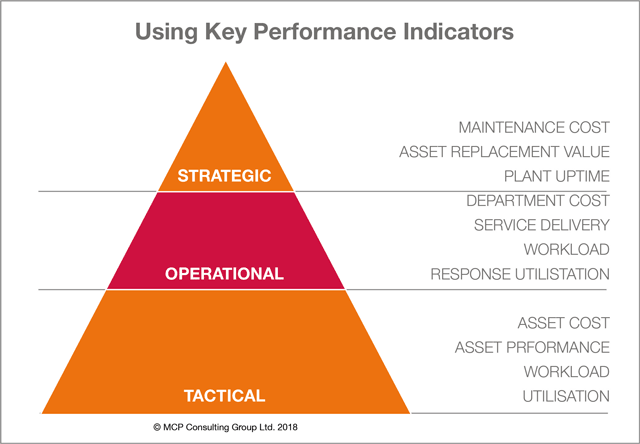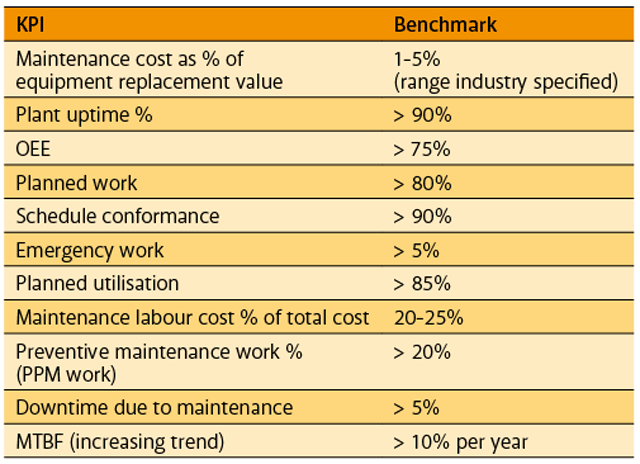 You can improve your organisation’s performance by tracking the right measures – but make them relevant and don’t try to measure too many things, says Peter Gagg, CEO of MCP Consulting Group.
You can improve your organisation’s performance by tracking the right measures – but make them relevant and don’t try to measure too many things, says Peter Gagg, CEO of MCP Consulting Group.
The use of key performance indicators is essential for any organisation that wants to improve performance and effectively manage its operations and service provision.
KPIs can be used to monitor progress towards meeting specific objectives or to highlight problems and issues. They are also invaluable for demonstrating the impact of change.
They are a cornerstone of the Asset Management Information Service (AMIS) Improvement Journey. MCP developed AMIS under the auspices of the DTI and used it to benchmark UK businesses that had an interest in asset management. It has since built the AMIS process into the world’s biggest benchmarking tool, which has been adopted by major corporations and used on a worldwide basis in more than 4,500 manufacturing facilities and utilities organisations.
However, one of the many lessons from carrying out AMIS audits are that organisations have too many measures and become overwhelmed with all the data information collected, thus losing track of the original purpose of the KPIs in the first place.
The second lesson, therefore, is to define the key indicators which will drive progress towards achieving the real objectives. For most organisations a maximum of 16 indicators will be sufficient for both strategic and day-to-day purposes.
At the maintenance level, the main KPI is cost of maintenance as a proportion of asset replacement value, and this is the most important strategic indicator.
Management of spare parts and stores often fall within the remit of the maintenance group and can also use a similar structure of KPIs.
The KPIs should be used as a measure of progress, but to be truly effective they need to be compared with recognised industry benchmarks. Over the past 20 years, participants in the AMIS audit programme have contributed information which has enabled a set of specific industry sector benchmarks to be compiled. Maintenance KPIs therefore reflect achievement and progress against the industry benchmark.
Selecting the right KPIs will provide an organisation with an overview of the current situation within the plant being maintained.
They should provide some indication of the delivery of maintenance service; how well financial and human resources are being used; and how well the maintenance workload is reducing the risk of equipment failure and the operating performance of the equipment.
Maintenance KPIs reflect maintenance costs; equipment reliability; maintenance workload; and asset reliability.
Examples of each category are:
Maintenance cost
- Maintenance cost per unit of production (this should decrease with time)
- Cost of maintenance per asset, which must include labour parts and contracts
- Maintenance cost for each work order approval (preventive, predictive and breakdown). This should be the total direct cost.
Equipment reliability
- Schedule conformance: how well the work adheres to the weekly schedule
- Proportion of planned versus unplanned work
- Response time
- Planning effectiveness, which measures the extent to which plans are completed, and the resources used.
Maintenance workload
- Labour hours spent on planned work
- Labour hours spent on breakdown work
- Labour hours spent on continuous improvement
- Labour hours spent on preventive maintenance
- Labour hours spent on corrective maintenance (excluding breakdowns)
The labour hours should include all direct and contract labour.
Asset reliability
Level of asset downtime is measured by either the number of equipment stops or mean time between failure.
MTBF is often difficult to measure because of constraints with the method of tracking equipment failures and production running times; hence the number of equipment stops is a more readily available measure.
A structure of relevant KPIs can be developed which can be used for any organisation and at any level or department, as shown in the diagram.

AMIS KPIs/Benchmarks
The following examples of key performance indicators and benchmarks serve as a guide to best practice.

The most important factor in choosing KPIs is that they are relevant to the organisation’s objectives.
Collecting data is easy. Using the data to provide meaningful information is more difficult. Using the information to drive real improvement is a challenge, if there are too many KPIs and they are not meaningful. Meaningful KPIs encourage change in practice and behaviour, which in turn improves plant performance.
consultancy@mcpeurope.com
www.mcpeurope.com/consultancy/asset-management-asset-management/asset-management-improvement-amis/

